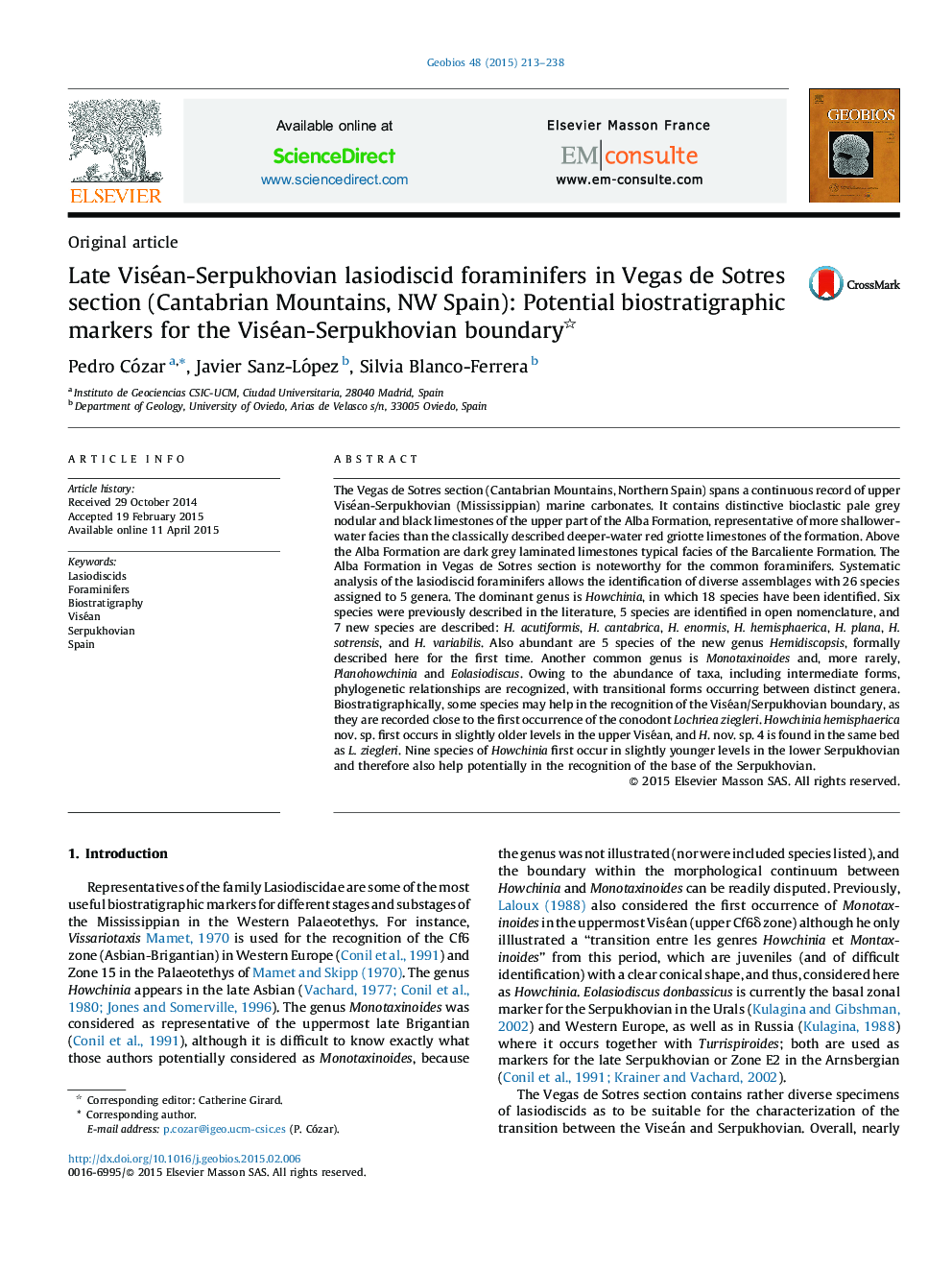| کد مقاله | کد نشریه | سال انتشار | مقاله انگلیسی | نسخه تمام متن |
|---|---|---|---|---|
| 4748017 | 1360073 | 2015 | 26 صفحه PDF | دانلود رایگان |

The Vegas de Sotres section (Cantabrian Mountains, Northern Spain) spans a continuous record of upper Viséan-Serpukhovian (Mississippian) marine carbonates. It contains distinctive bioclastic pale grey nodular and black limestones of the upper part of the Alba Formation, representative of more shallower-water facies than the classically described deeper-water red griotte limestones of the formation. Above the Alba Formation are dark grey laminated limestones typical facies of the Barcaliente Formation. The Alba Formation in Vegas de Sotres section is noteworthy for the common foraminifers. Systematic analysis of the lasiodiscid foraminifers allows the identification of diverse assemblages with 26 species assigned to 5 genera. The dominant genus is Howchinia, in which 18 species have been identified. Six species were previously described in the literature, 5 species are identified in open nomenclature, and 7 new species are described: H. acutiformis, H. cantabrica, H. enormis, H. hemisphaerica, H. plana, H. sotrensis, and H. variabilis. Also abundant are 5 species of the new genus Hemidiscopsis, formally described here for the first time. Another common genus is Monotaxinoides and, more rarely, Planohowchinia and Eolasiodiscus. Owing to the abundance of taxa, including intermediate forms, phylogenetic relationships are recognized, with transitional forms occurring between distinct genera. Biostratigraphically, some species may help in the recognition of the Viséan/Serpukhovian boundary, as they are recorded close to the first occurrence of the conodont Lochriea ziegleri. Howchinia hemisphaerica nov. sp. first occurs in slightly older levels in the upper Viséan, and H. nov. sp. 4 is found in the same bed as L. ziegleri. Nine species of Howchinia first occur in slightly younger levels in the lower Serpukhovian and therefore also help potentially in the recognition of the base of the Serpukhovian.
Journal: Geobios - Volume 48, Issue 3, April–June 2015, Pages 213–238